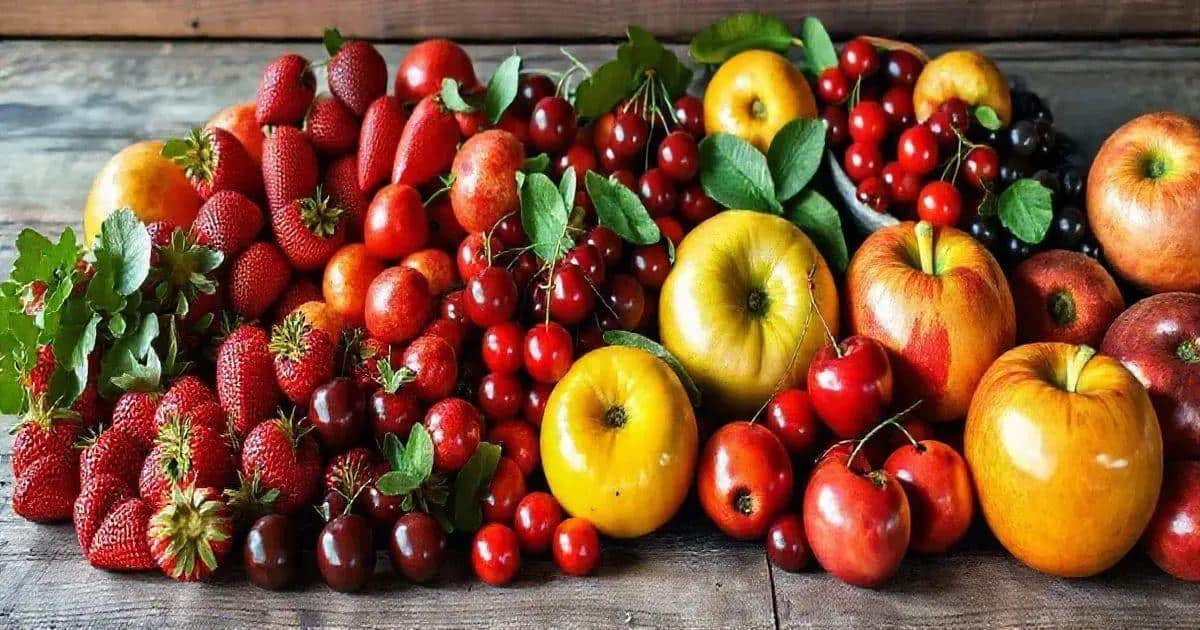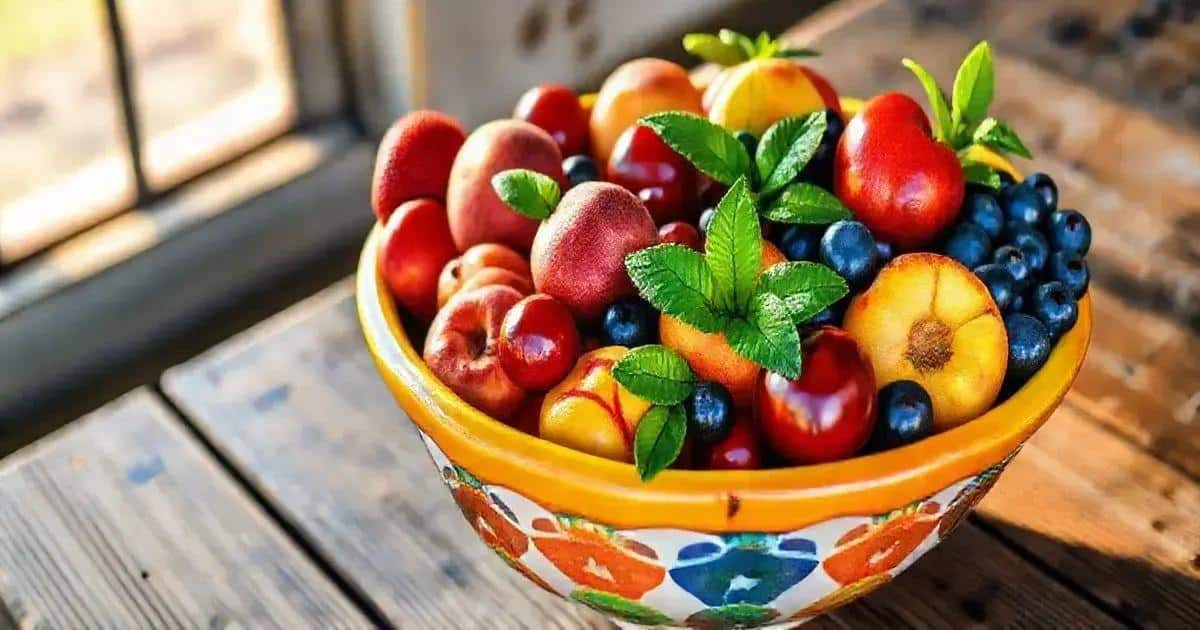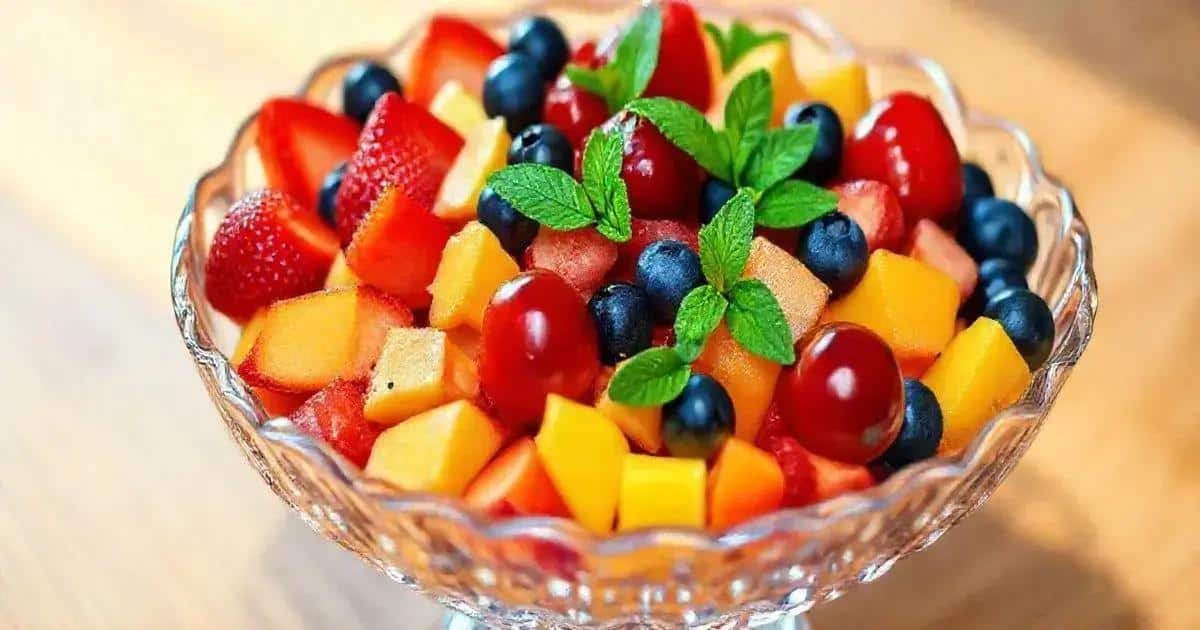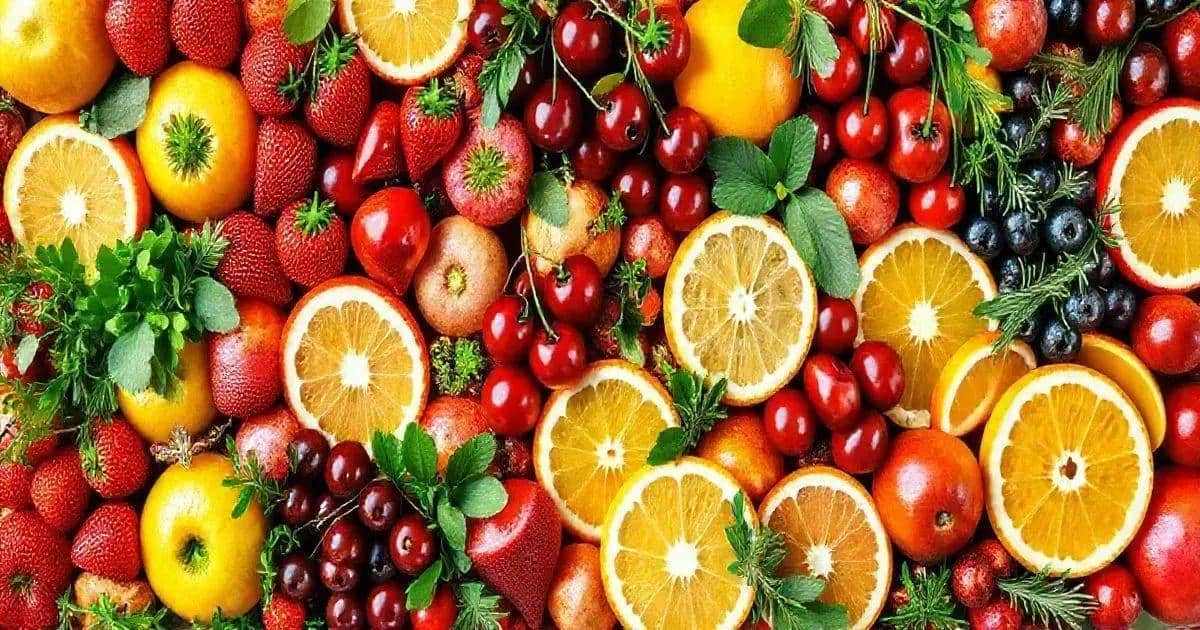In-season fruits are fresher, more nutritious, and flavorful options that enhance your health and meals. They provide numerous benefits such as supporting digestion and boosting immunity, while also minimizing environmental impact by being locally sourced. Incorporate them into your diet for a tasty and healthy lifestyle!
**In-season fruits** bring vibrant flavors and essential nutrients to our meals. From strawberries in spring to apples in autumn, enjoying these seasonal delights enhances taste and health. In this article, we’ll explore the best in-season fruits, including their delicious recipes and unique benefits, that you can incorporate into your diet. Get ready to savor the flavors of each season!
Summary
- 1 Recipe Ingredients for In-Season Fruits Delight
- 2 Detailed Preparation Method for Seasonal Treats
- 3 Recipe Curiosities: In-Season Fruits
- 4 Fruits You Didn’t Know Were In-Season
- 5 Health Benefits of Eating In-Season Fruits
- 6 Thank You for Exploring In-Season Fruits!
- 7 FAQ – Frequently Asked Questions about In-Season Fruits
Recipe Ingredients for In-Season Fruits Delight
For our delightful In-Season Fruits Delight, you’ll need a colorful selection of fresh fruits that are currently in season. Here’s a list of ingredients that will make this recipe shine:
- Fresh Strawberries: 1 cup, hulled and sliced
- Juicy Peaches: 1 cup, diced
- Sweet Cherries: 1 cup, pitted and halved
- Ripe Blueberries: 1 cup
- Honey or Maple Syrup: 2 tablespoons (for natural sweetness)
- Fresh Mint Leaves: a handful, for garnish
This medley of fruits not only offers a burst of flavors but also presents a vibrant feast for the eyes. Choose organic fruits when possible for the best taste and quality. Serve the fruits fresh or use them in various desserts and drinks!
Detailed Preparation Method for Seasonal Treats
To create the perfect In-Season Fruits Delight, follow these detailed steps for preparation:
- Wash the Fruits: Begin by thoroughly washing all your fruits under cold water. Removing pesticides and dirt ensures that your dish is fresh and safe.
- Prep the Strawberries: Hull the strawberries by removing the green tops. Slice them into thin pieces, about 1/4 inch thick, and set aside in a bowl.
- Prepare the Peaches: Cut the peaches in half and remove the pit. Dice them into bite-sized cubes and add them to the bowl with strawberries.
- Pit and Halve the Cherries: Use a cherry pitter to remove the pits from the cherries. Cut them in half, then toss them into the fruit mixture.
- Add Blueberries: Rinse the blueberries gently and add them whole to the other fruits in the bowl.
- Mix Ingredients: Using a large spoon, gently combine all the fruits, taking care not to crush them. This helps maintain their shape and texture.
- Sweeten the Mix: Drizzle 2 tablespoons of honey or maple syrup over the fruit mixture. Gently fold the mixture to evenly distribute the sweetness.
- Garnish with Mint: Finally, chop fresh mint leaves and sprinkle them over the top of the fruit mix for an aromatic touch.
Your In-Season Fruits Delight is now ready to serve! Use it as a refreshing side dish, topping, or even as a dessert with yogurt or whipped cream.
Recipe Curiosities: In-Season Fruits
Did you know that in-season fruits not only taste better but also offer a wealth of benefits? Here are some interesting curiosities about in-season fruits that might surprise you:
- Seasonal Nutrients: In-season fruits are picked at their peak ripeness, which means they are richer in vitamins and minerals. For example, strawberries in late spring are packed with vitamin C, while apples in the fall are high in fiber.
- Flavor Explosion: Fruits harvested in their natural season tend to have superior flavor. In-season cherries, for instance, become incredibly sweet and juicy, making them a favorite for desserts.
- Health Benefits: Consuming in-season fruits can boost your immune system. Citrus fruits like oranges and grapefruits are abundant in winter and can help fend off colds!
- Environmental Impact: Eating in-season fruits helps support local farmers and reduces carbon footprint, as they require less transportation than out-of-season fruits that are shipped internationally.
- Variety Over Time: Some fruits might not be available all year round, leading to delightful anticipation. For example, waiting for watermelon season in summer makes every juicy bite special.
Being mindful of the seasonality of fruits not only enhances your meals but also connects you to the rhythms of nature.
Fruits You Didn’t Know Were In-Season
Many people are surprised to learn that some fruits are in-season during times they least expect. Here are a few fruits you didn’t know were in-season:
- Pomegranates: Often associated with late fall and winter, pomegranates are packed with antioxidants and are in-season from September to January. Their unique tart flavor makes them perfect for salads and winter dishes.
- Kiwi: While many think of kiwi as a tropical fruit, it’s actually in-season from late winter through early spring. Kiwis are a great source of vitamin C and add a lovely green contrast to fruit salads.
- Persimmons: Easy to overlook, these sweet and honey-like fruits are in-season from October to December. They can be eaten fresh or dried, adding a sweet touch to both desserts and savory dishes.
- Rhubarb: Often thought of as a vegetable, rhubarb is in-season from April to June. Its tart flavor makes it a perfect addition to pies, jams, and even cocktails.
- Grapefruit: Known mainly for its bitter notes, grapefruit is in-season from winter to early spring. This fruit is a fantastic addition to breakfast dishes and fresh salads.
Exploring these lesser-known seasonal fruits can elevate your dishes and introduce exciting flavors to your meals!
Health Benefits of Eating In-Season Fruits
Eating in-season fruits provides numerous health benefits that can enhance your overall well-being. Here are some key advantages of including these delicious fruits in your diet:
- Rich in Nutrients: In-season fruits are picked at their peak ripeness, meaning they contain higher levels of vitamins and minerals. For instance, seasonal berries are loaded with antioxidants.
- Improved Digestion: Many in-season fruits, like apples and pears, are high in fiber, which aids digestion and promotes gut health.
- Better Hydration: Fruits like watermelon and cucumber, which are typically in-season during the summer, have high water content, helping to keep you hydrated in warmer months.
- Weight Management: Low in calories and high in nutrients, fruits make a satisfying snack. Eating in-season fruits can help maintain healthy body weight by keeping you full without added sugars.
- Supports Immune Function: Consuming seasonal fruits provides essential vitamins, like vitamin C from citrus fruits, which can boost your immune system and help fight off illnesses.
- Enhanced Flavor: Eating in-season fruits allows you to enjoy their natural flavors at their best. This can lead to a greater desire to include more fruits in your meals, supporting a healthier diet.
Incorporating a variety of in-season fruits into your diet can lead to improved health and vitality, while also making your meals more enjoyable.
Thank You for Exploring In-Season Fruits!
We hope this journey into the world of in-season fruits has inspired you to embrace their flavors and health benefits in your daily meals!
If you enjoyed our guide on seasonal delights, we invite you to stay connected! Follow us on our social networks and immerse yourself in the vibrant community of food lovers. Join us at the Portal of Drinks and Cocktails Master of Drinks for exciting recipes, tips, and more delicious content.
Your enthusiasm means the world to us, and together we can create a flavorful experience. Thank you for being a part of our journey!
FAQ – Frequently Asked Questions about In-Season Fruits
What are in-season fruits?
In-season fruits are fruits that are currently being harvested and are at their peak quality and flavor for that time of year.
Why should I eat in-season fruits?
Eating in-season fruits is beneficial because they are fresher, more flavorful, and often more nutritious than out-of-season fruits.
How can I find out which fruits are in-season?
You can check local farmers’ markets, grocery stores, or online seasonal produce guides to see which fruits are in-season in your area.
Are there any health benefits to eating in-season fruits?
Yes! In-season fruits are packed with nutrients and antioxidants, support digestion, and help boost your immune system.
Can I use in-season fruits in drinks and cocktails?
Absolutely! In-season fruits can enhance the flavor of cocktails and drinks, adding freshness and vibrant colors.
How can I store in-season fruits to make them last longer?
To extend the shelf life of in-season fruits, store them in a cool, dry place or refrigerate them. Wash them just before eating to avoid spoilage.








